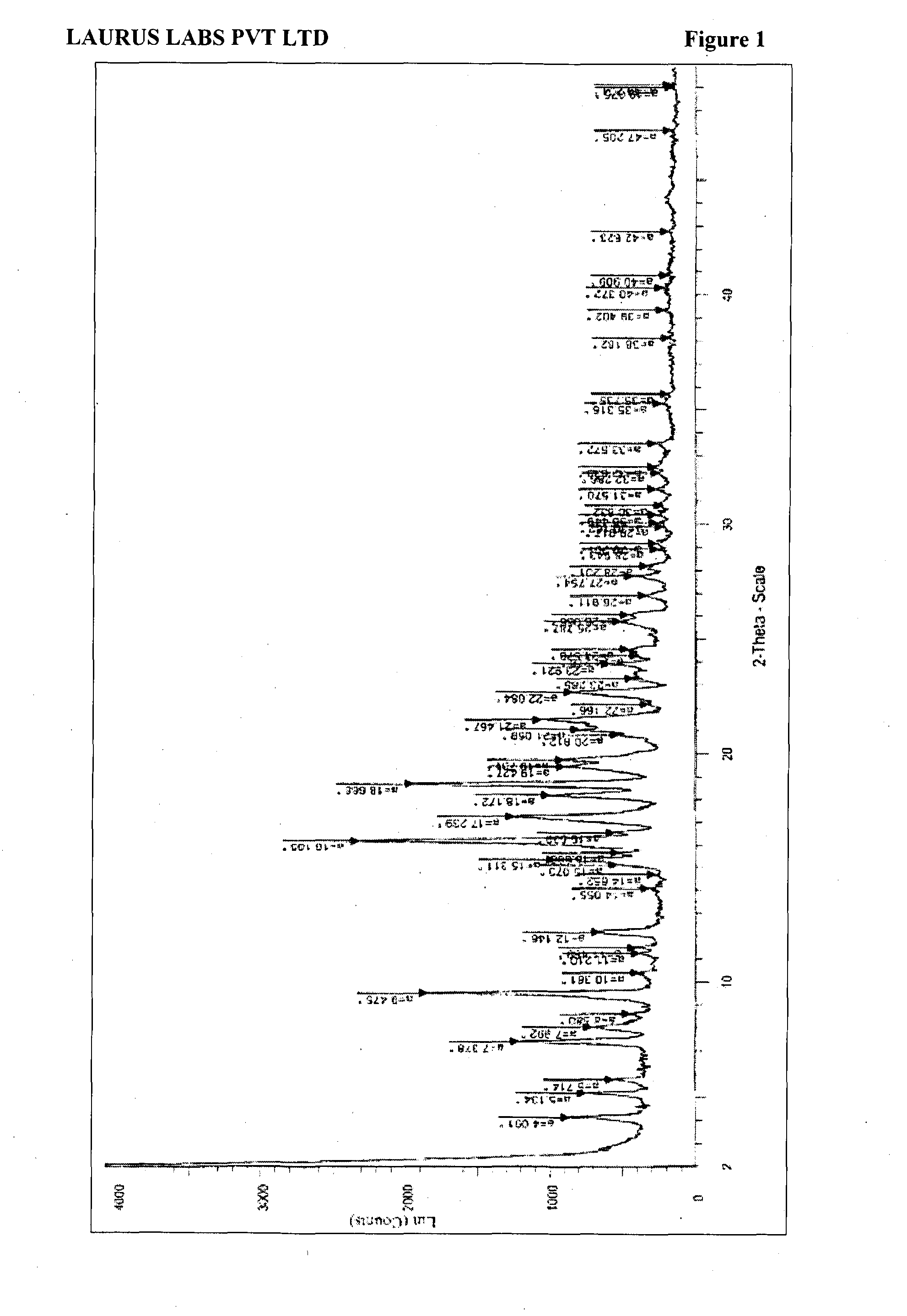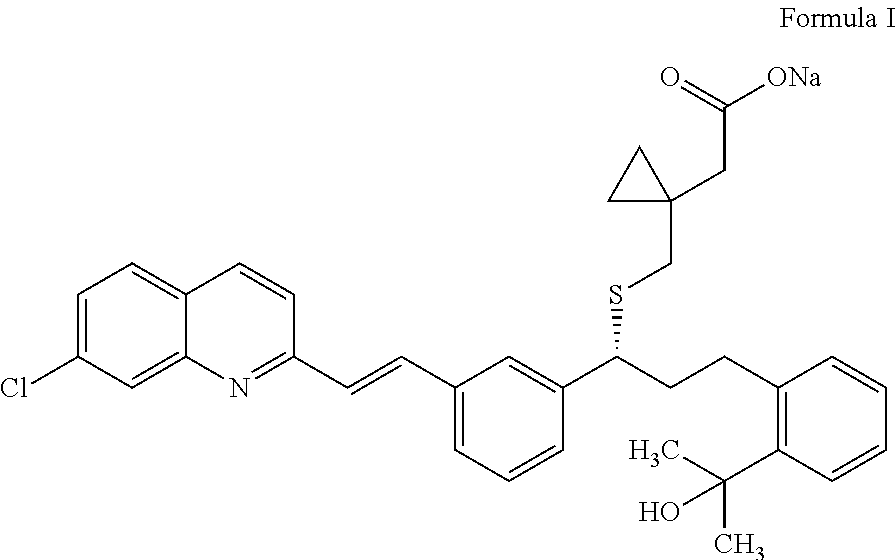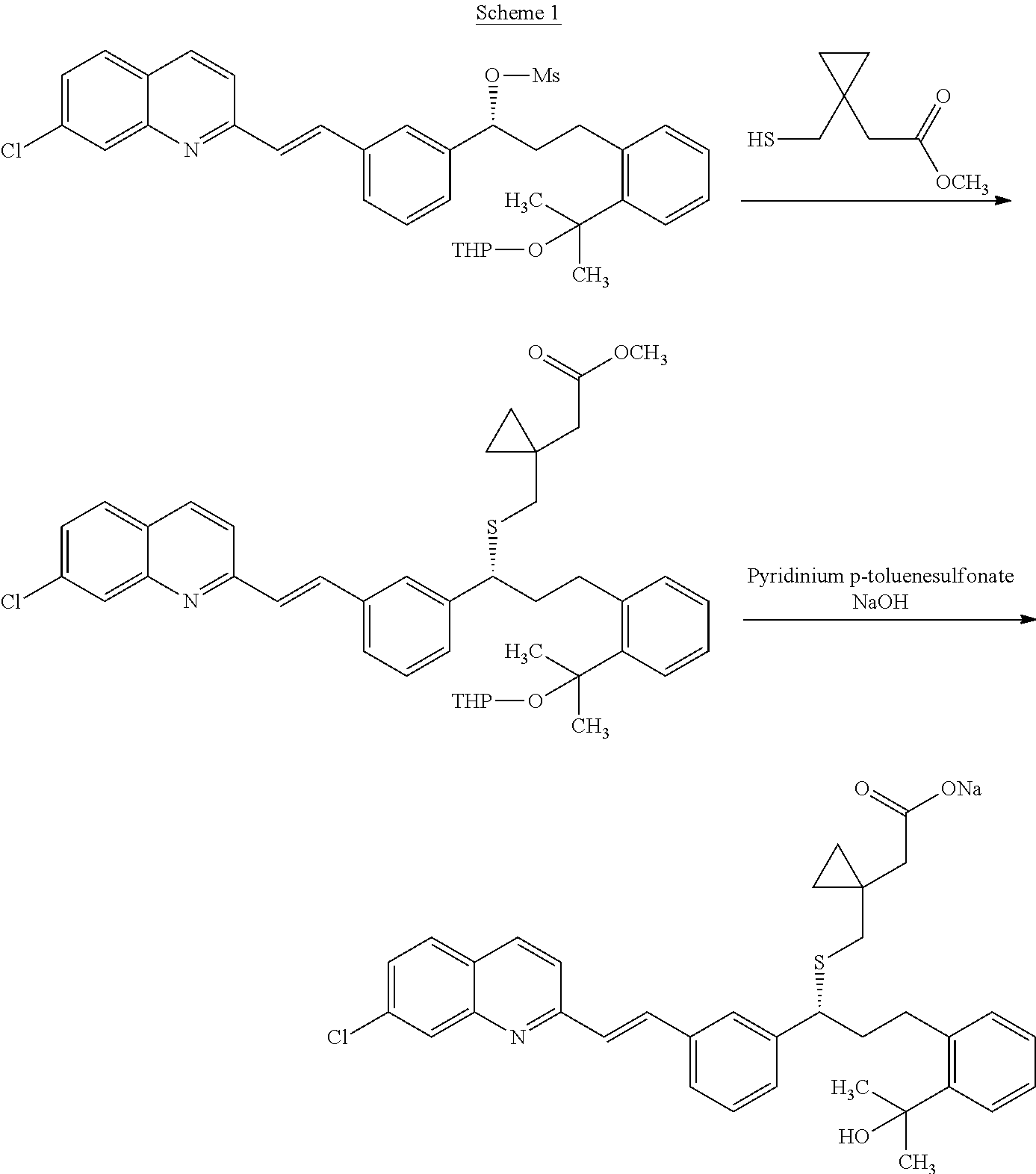Process for preparation of montelukast sodium
a technology of montelukast and sodium, which is applied in the field of improvement, can solve the problems of increasing the manufacturing cost, increasing the manufacturing cycle time and a decrease in the product yield, and the process is not viable for large-scale production of montelukast sodium, and achieves the effects of high purity and yield, simple and cost-effectiv
- Summary
- Abstract
- Description
- Claims
- Application Information
AI Technical Summary
Benefits of technology
Problems solved by technology
Method used
Image
Examples
example 1
[0100]Preparation of Montelukast 1-methyl-3-phenylpropyl amine salt.
[0101]A 1 L round bottom flask fitted with a mechanical stirrer, thermometer socket, addition funnel was purged with N2. The flask was charged 2-(2-(3(S)-(3-(2-(7-chloro-2-quinolinyl)-ethenyl)phenyl)-3-hydroxypropyl)phenyl)-2-propanol (100 gms) and THF (500 ml) and temperature was cooled to about −20° C. to about −15° C. Diisopropyl ethyl amine (42.4 gms) was charged and then methane sulfonyl chloride (30 gms) was added. The reaction mixture was stirred for 4 hours and undissolved salts were filtered off from the reaction to obtain filtrate containing mesylate compound. In another 2 L round bottom flask was charged 1-(mercaptomethyl)cyclopropane acetic acid (41.5 gms) and THF (400 ml) at 25° C. to 35° C. and the temperature was cooled to about −15° C. 15% w / w butyl lithium (355 ml) solution in hexane was added at about −15° C. to about −10° C. and the reaction mixture was stirred for 2 hours at same temperature to o...
example 2
[0103]Purification of Montelukast 1-methyl-3-phenylpropyl Amine Salt.
[0104]A 2 L round bottom flask fitted with a mechanical stirrer, thermometer socket, addition funnel was purged with N2. The flask was charged 100 gms of Montelukast 1-methyl-3-phenylpropyl amine salt (obtained from Example 1) and toluene (1000 ml). The temperature was raised to 70° C. to 75° C. and stirred for 15 minutes. The reaction mixture was allowed to cool to 25° C. to 35° C. and stirred for about 8 hours at same temperature. Precipitated solid was filtered and washed with toluene (10 ml). The wet product was dried at about 50° C. to about 55° C. under reduced pressure to provide the title compound as pure.
[0105]Yield: 90 gms
[0106]Cyclic ether impurity: 0.02%
[0107]Sulfoxide impurity: 0.10%
[0109]Cis isomer: 0.02%
[0110]S-isomer content: Not detected
[0111]Diol compound: 0.05%
example 3
[0112]Preparation of Montelukast 1-methyl-3-phenylpropyl Amine Salt.
[0113]A 1 L round bottom flask fitted with a mechanical stirrer, thermometer socket, addition funnel was purged with N2. The flask was charged 2-(2-(3(S)-(3-(2-(7-chloro-2-quinolinyl)-ethenyl)phenyl)-3-hydroxypropyl)phenyl)-2-propanol (100 gms) and THF (500 ml) and temperature was allowed to cool to about −20° C. to about −15° C. Diisopropyl ethyl amine (45.2 gms) was charged and then methane sulfonyl chloride (32.5 gms) was added at same temperature. The reaction mixture was stirred for 4 hours and undissolved salts were filtered off to obtain filtrate containing mesylate compound. In another 2 L round bottom flask was charged 1-(mercaptomethyl)cyclopropane acetic acid (38.35 gms) and DMF (300 ml) at 25° C. to 35° C. and allowed to cool to about −5° C. to 0° C. To the reaction mixture, a mixture of 25% w / w Sodium methoxide (130 ml) solution in methanol and C.S. Lye (13 ml) was added at same temperature and the reac...
PUM
| Property | Measurement | Unit |
|---|---|---|
| temperature | aaaaa | aaaaa |
| temperature | aaaaa | aaaaa |
| temperature | aaaaa | aaaaa |
Abstract
Description
Claims
Application Information
 Login to View More
Login to View More - R&D
- Intellectual Property
- Life Sciences
- Materials
- Tech Scout
- Unparalleled Data Quality
- Higher Quality Content
- 60% Fewer Hallucinations
Browse by: Latest US Patents, China's latest patents, Technical Efficacy Thesaurus, Application Domain, Technology Topic, Popular Technical Reports.
© 2025 PatSnap. All rights reserved.Legal|Privacy policy|Modern Slavery Act Transparency Statement|Sitemap|About US| Contact US: help@patsnap.com



